- Fussball Coaches Newsletter
- Posts
- ⚽Principles of Counter-Attacking
⚽Principles of Counter-Attacking
A Look at the Current Trend in Modern Football
Hello and warm welcome to the latest edition of our newsletter! In this issue, the following topic takes center stage:
⚽Principles of Counter-Attacking
⚽Prinzipien des Konterns
When is a Counter-Attack the Right Choice?
The answer depends largely on a team’s overall playing philosophy and tactical setup. Managers like José Mourinho or Adi Hütter often place high priority on counter-attacks – their teams look to break forward quickly after winning possession, aiming to get to goal in as few actions as possible. Others, like Pep Guardiola or Thomas Tuchel, take a different approach. Their sides are more likely to secure possession first, slow the game down, and build patiently through controlled phases of play.
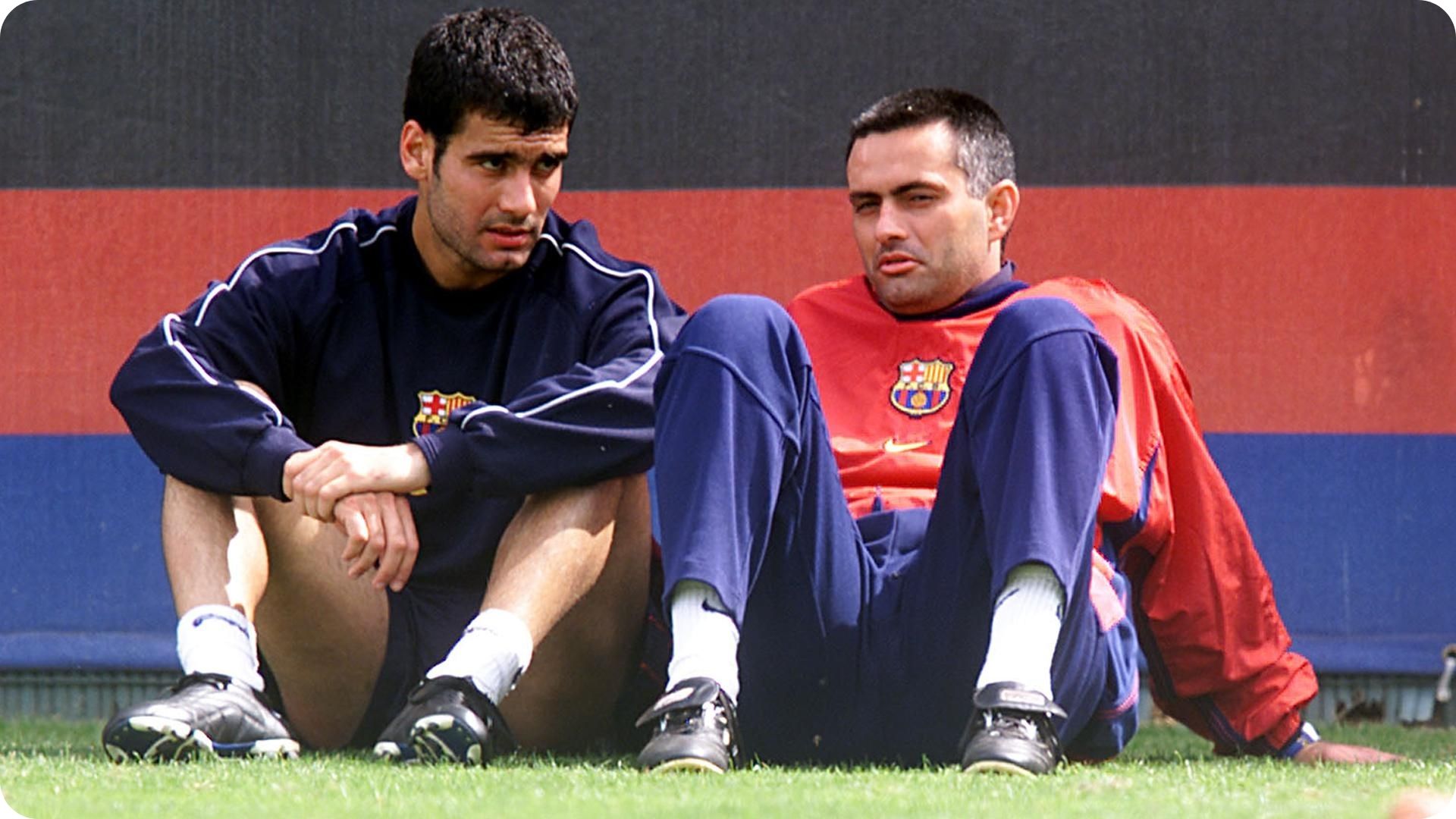
No matter which philosophy a coach follows, there are universal factors that influence whether a counter-attack makes sense in a given moment. One key element is where possession is regained. If a player wins the ball right in front of the opponent’s goal – say, by dispossessing the goalkeeper – it would be a missed opportunity not to shoot immediately. On the other hand, winning the ball deep inside your own box means a long way to goal, and the odds of a successful counter are much lower.
In general: the closer the ball recovery happens to the opposition’s goal, the shorter the path to a scoring chance – and the higher the likelihood of catching the opposition before they drop back into a compact defensive shape. Jürgen Klopp’s teams have often set the standard here: they pressed high, won the ball near the opponent’s box, and minimized the space they had to cover on the break.
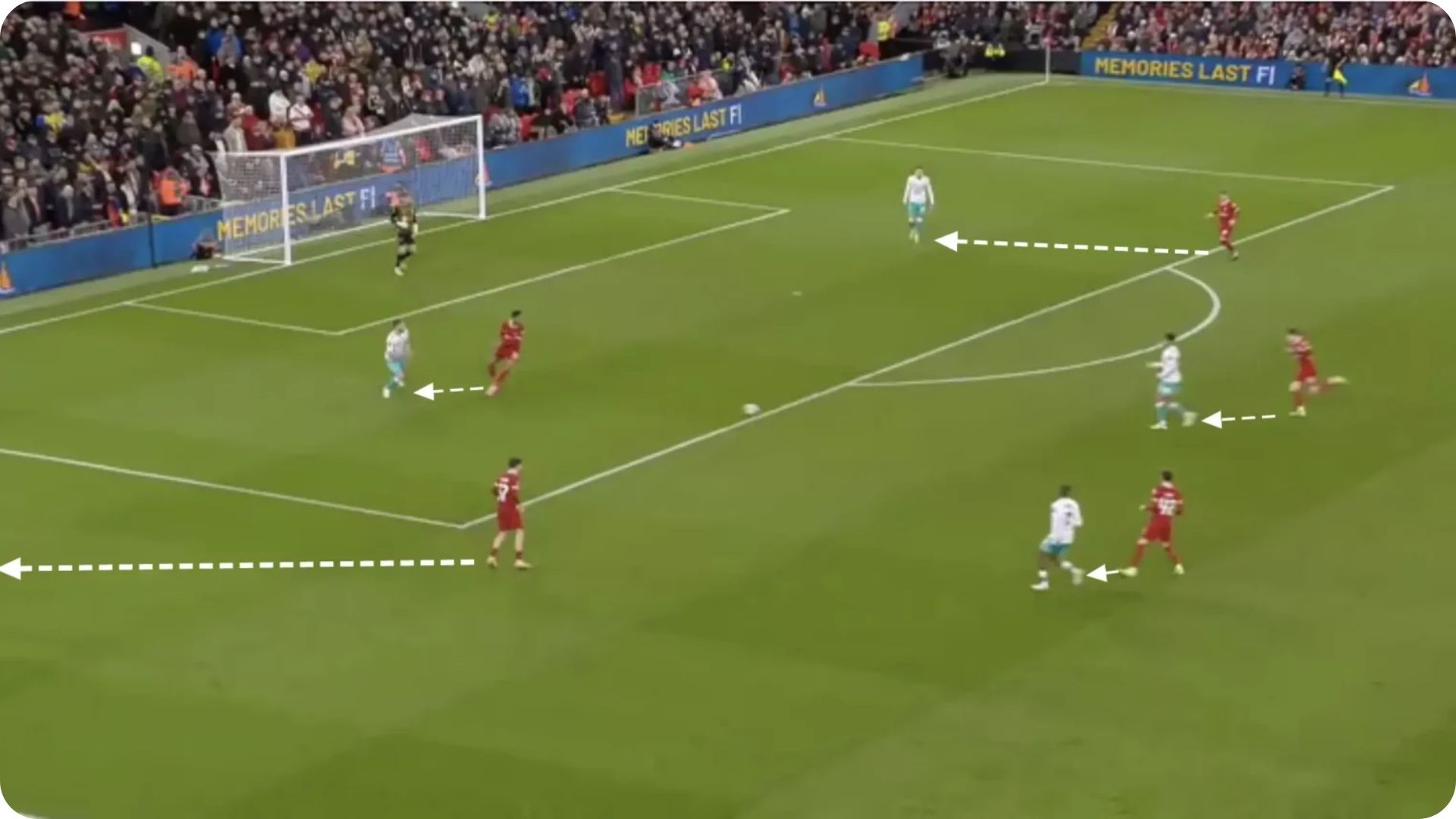
Another key factor is how many opposition players are between the ball and their own goal. The fewer defenders that need to be bypassed, the higher the success rate of a counter. Defenders out of position struggle to cover space effectively and are limited in their tactical choices. A team that presses high can often win the ball in areas where they find themselves in numerical superiority. But if all eleven opposing players are already behind the ball, a quick counter becomes far less likely to succeed.
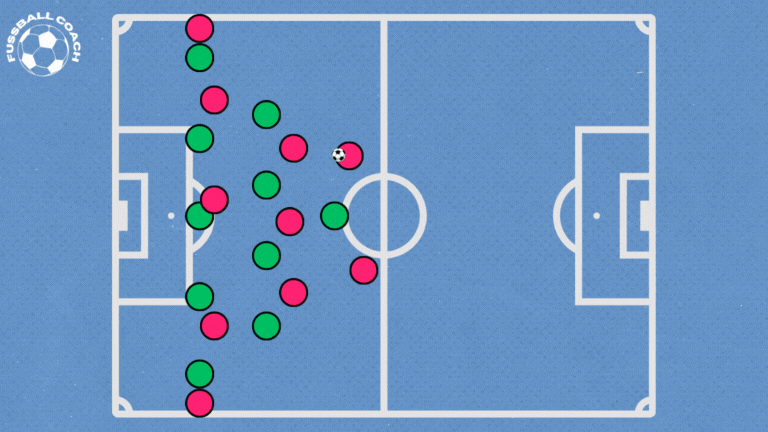
Just as important as the position of the opposition is the positioning of your own teammates. A fast break can only work if multiple players are in position to immediately run toward goal. If your team wins the ball near its own penalty area and all your teammates are still recovering behind the ball, there’s simply no outlet to launch a meaningful attack.
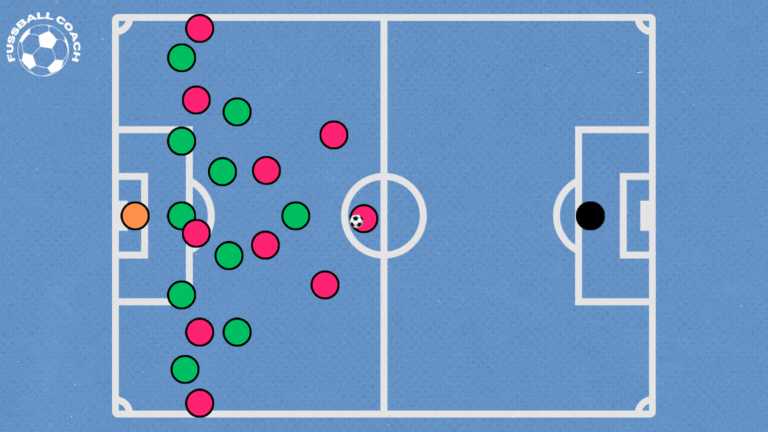
A strong pressing system also relies on putting pressure on the ball carrier. Forced into quick decisions, he’s more likely to make a mistake. The reverse also applies: if the player on the ball has time and space, he can scan the field, pick the best passing option, or carry the ball forward himself. One general principle holds: the less pressure the ball carrier faces, the easier it is to launch a clean and effective counter-attack.
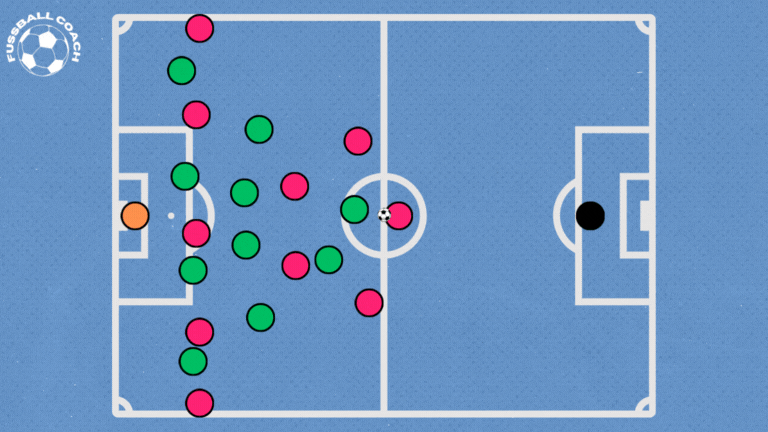
That said, not every ball recovery leads to a promising counter. Sometimes the ball goes out of bounds, or there’s a whistle that interrupts play. The opponent might delay restarts or force the team in possession to reset. In those cases, even if a turnover has occurred, the opportunity for a counter may be gone. That’s why some teams wait before taking a quick throw-in or free-kick – they want to ensure they’re in the right attacking shape first.
Because these split-second decisions aren’t always easy to make in real time, teams invest a lot of training hours into ball recovery patterns. Coaches give clear instructions: which spaces to attack, which passes to look for. If a turnover happens in a rehearsed situation, players can fall back on automatic routines.
But even in untrained moments, experienced players know what to do. Modern counter-attacking follows clear principles, just like any other phase of play. And most players are introduced to them already in academy football.
Tactical Trends: The Rise of the Transition Game
The growing importance of transition moments is also reflected in Premier League stats. The 2024/25 season has seen the lowest average pass count in eight years, with just 899 passes per match. Up-and-coming sides like Nottingham Forest, Bournemouth, or Crystal Palace are moving away from possession-based play. Instead, they emphasize quick transitions and verticality after winning the ball.
Rather than circulating the ball patiently, more teams now look to exploit unsettled opposition defenses immediately. It’s a clear shift in top-level football: patience is giving way to pace. The teams that master transition play – especially counter-attacking – are gaining a clear tactical edge.
Tactical Tools for a Successful Counter:
Runs in behind:
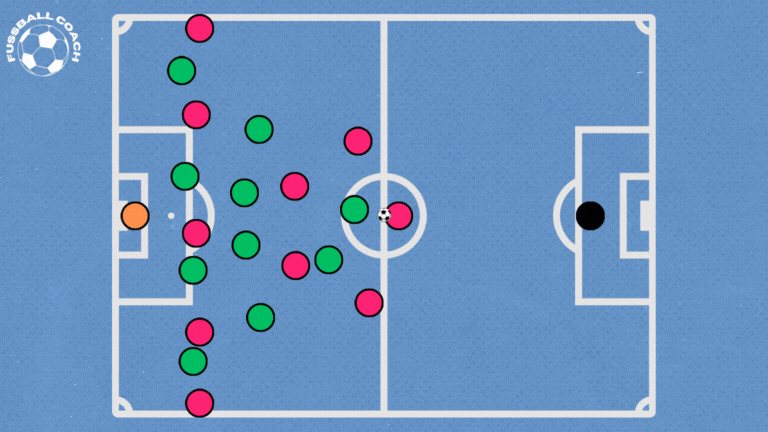
Passes played against the defensive shift:
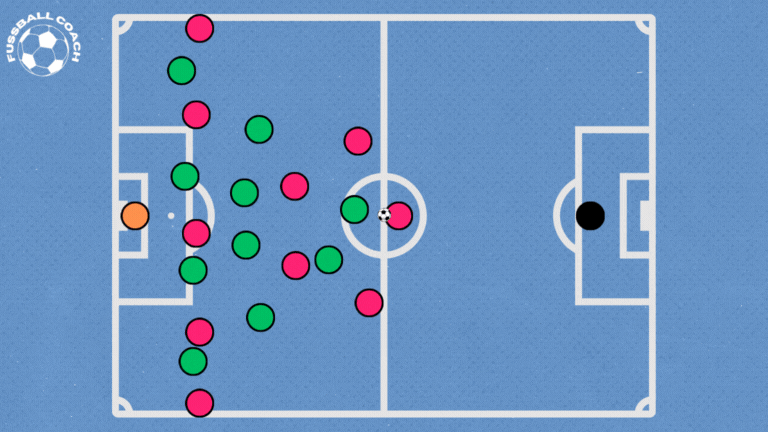
Staggered or delayed arrivals into the box (wave runs):
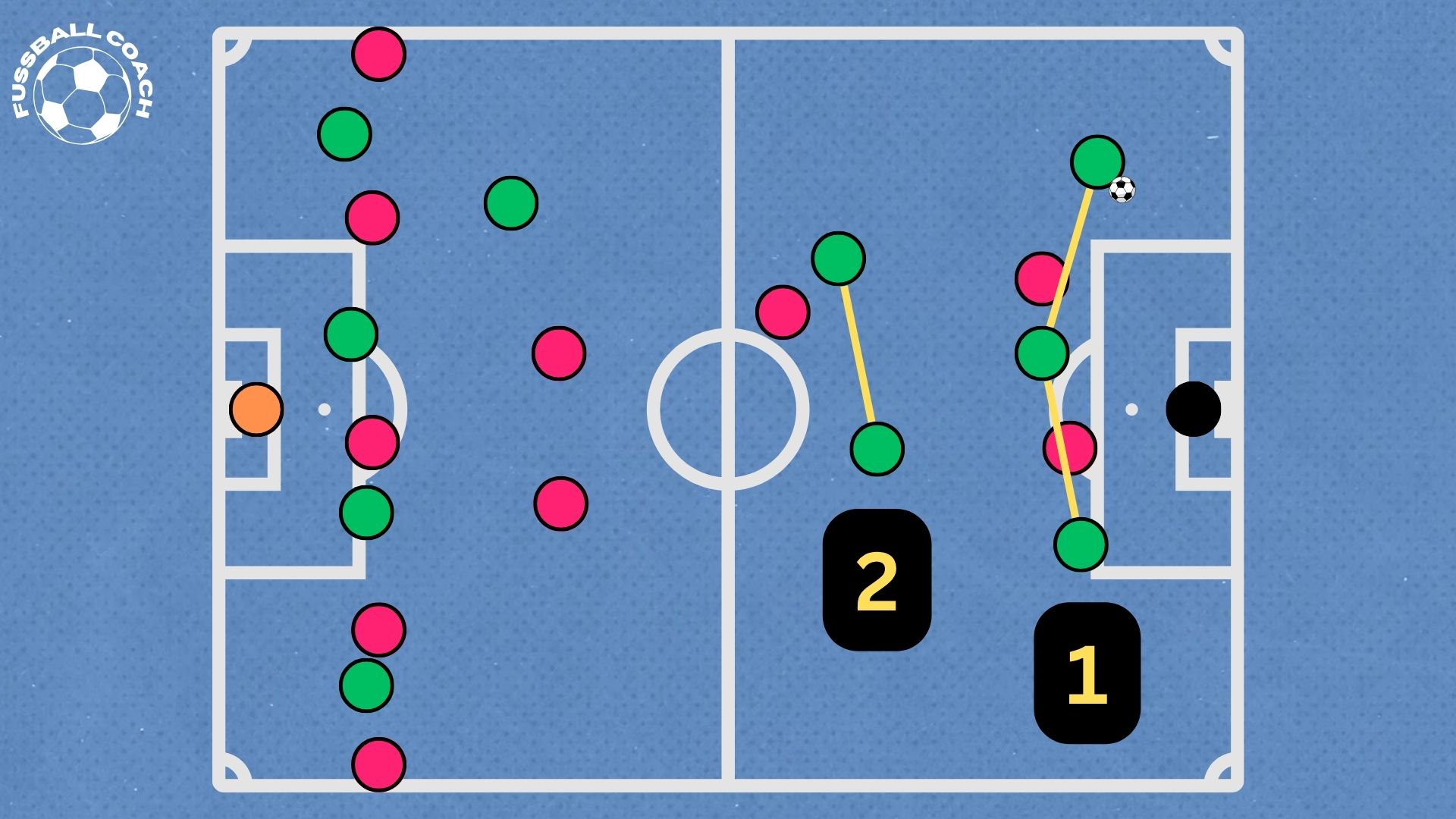
Thanks for reading! If you enjoyed this article, feel free to share it with a fellow coach or colleague who might find it helpful.
Check out our Homepage for exclusive training videos and products.
Was this post forwarded to you? Subscribe here.
Have an idea or feedback to share? [email protected]
Reply